Contents
- What are the benefits of owning a screen printing business?
- How to build a business plan
- The essential screen printing business tools
- How to market a screen printing business?
- How to grow your screen printing business
- Common mistakes to avoid when starting a screen printing business
A note from Bruce, Printavo’s founder:
I started a screen printing business at University of Illinois.
I always loved fashion, design, skateboarding and computers – and screen printing managed to combine all of my interests (and make some extra cash). I made Printavo to help screen printers get organized and solve their most common problems. Now it’s used by thousands of print shops in more than 40 countries!
If you want to start a screen printing business, make sure you love:
- Apparel and printing
- Dealing with customers
- Working on (and in!) a business
These are the three key elements!
Don’t get into screen printing just for the money. I can promise that you’ll burn out…and end up hating screen printing.
When you’re up printing at 2 AM, or have to redo an order because of a fussy customer, or wind up needing to remake a screen because it just broke and you’re on a tight deadline..loving what you do will keep you pushing forward.
What are the benefits of owning a screen printing business?

Owning your own business is part of the American dream. Screen printing offers people from all walks of life an opportunity for entrepreneurship – and a way to connect with their local community. Unique for its large market of small-to-medium size print shops, the US has a vibrant and diverse screen printing industry.
Think about your favorite t-shirt. It was printed somewhere! Screen printers make lasting connections with their communities by creating custom merchandise that people love – and wear around town. While you may not know the shop that made your favorite shirt right now, you’ll soon learn that screen printing is a tightly-knit community with helpful Facebook Groups. The history of modern screen printing is rich thanks to the people that make up the industry. It’s filled with artists, entrepreneurs, and even parents looking for a side hustle.
What types of people own screen printing businesses?
Printavo has helped thousands of screen printers start, organize, and grow their business – so we’ve seen a few common trends in the people that succeed as screen printers.
There are three major types of people we’ve discovered that love screen printing and love working in the industry.
Printers and artists
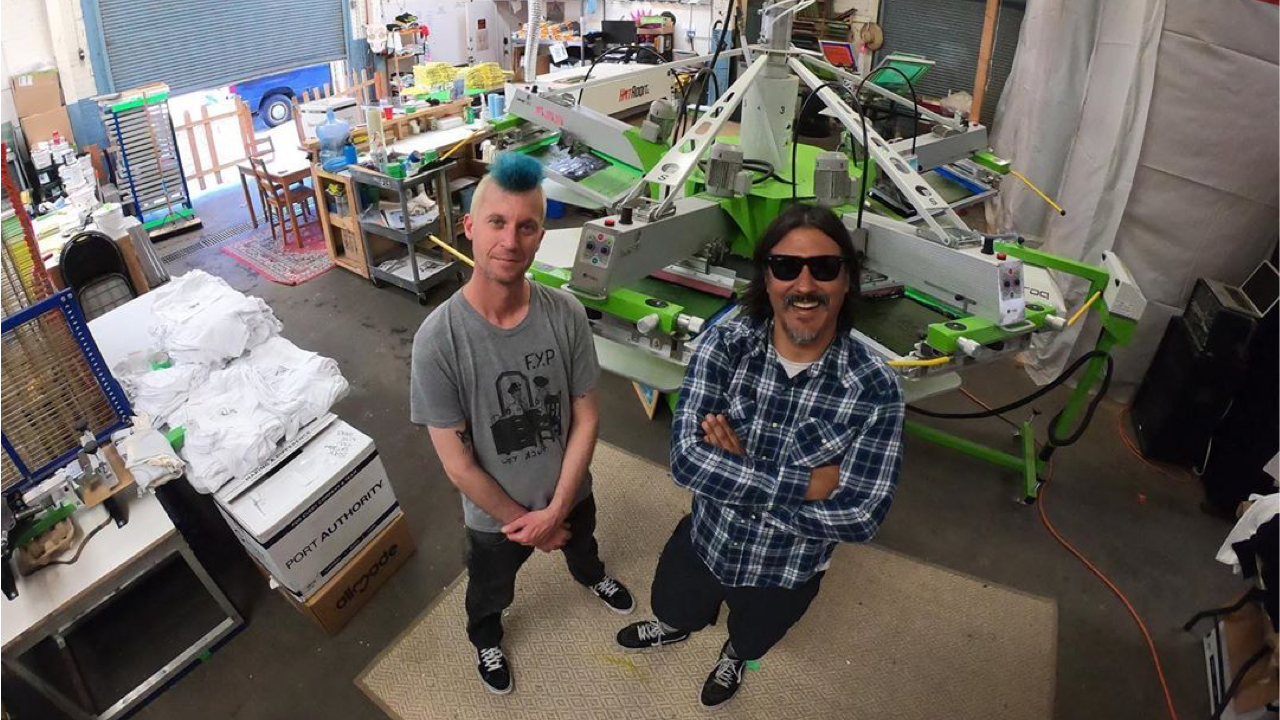
If you love printing itself or artwork, screen printing has a place for you.
Printers typically have an eye for detail, love experimenting with process and technique, and adore working with their hands. They don’t mind spending all day on their feet experimenting with different screens and squeegees because there’s a thrill to putting ink on a shirt that they live for.
You can find printers working as press operators, production managers, and even as owners! Lots of print shops (like SHIRT KONG) have started because a young screen printer wanted to try and do things their own way.
Artists can come from many walks of life, but they’re driven by crafting great artwork for screen printing. Shops like The Yetee use art as a gateway to the communities they want to reach. Think about it: you can print almost anything on a t-shirt (as long as you don’t violate copyright law).
Then, people wear your art everywhere. More compelling, art for screen printing is driven by process and technique: artists have to be aware of the limitations of screen printing. Even a simple photograph or painting can be a challenging puzzle to figure out how to screen print. But that limitation isn’t a constraint – it makes screen print artists particularly adaptable and creative.
Artists can also make a career out of t-shirt and merchandise design on sites like Upwork, creating vibrant and purposeful designs for clients of all stripes.
“The t-shirt is the ultimate canvas,” Jon Weiss told us. He would know – he’s co-inventor of colorful simulated process screen printing, the kind of high-color print you’d see for sports championships in the 90s.
Entrepreneurs
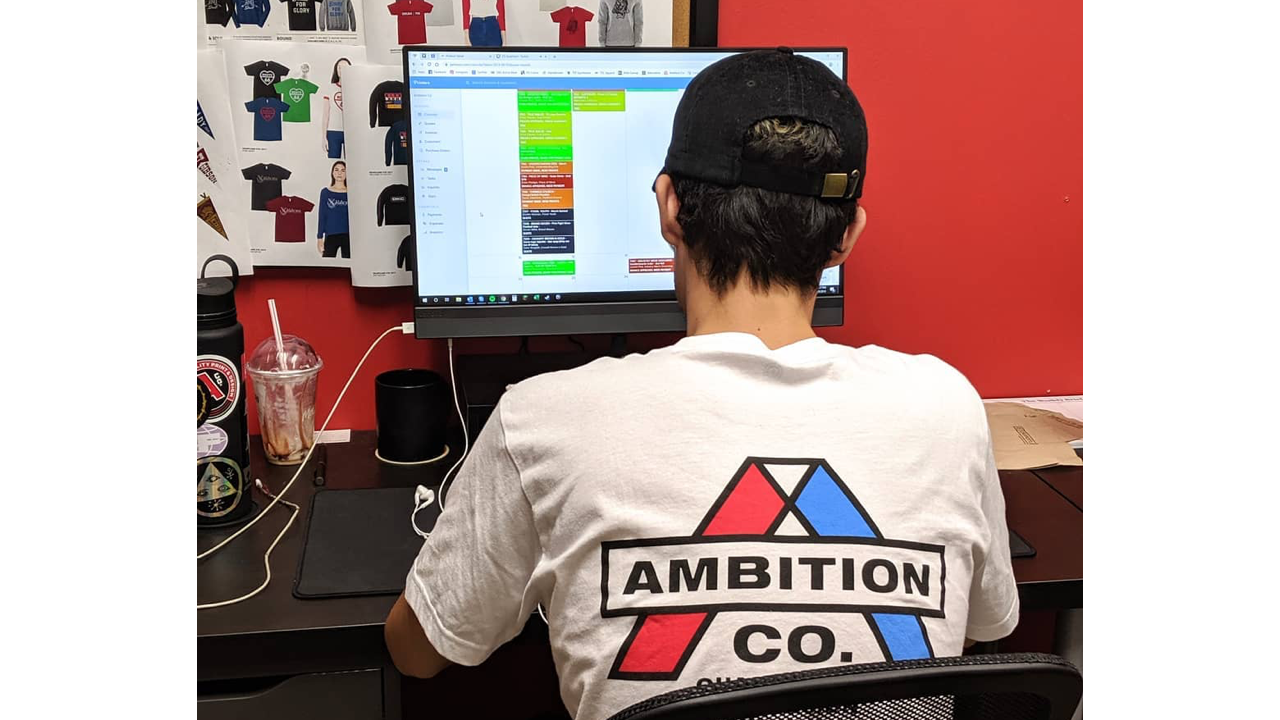
Entrepreneurs are the driven visionaries of the screen printing world. They’re the ones that “jump out of the plane and build a parachute as they fall.” While some entrepreneurs start as artists or printers, they’re animated by the desire to grow their organization and serve their customers. They come in all personality types and interests – you don’t have to be a natural salesman to be an entrepreneur (though it can help).
If you’re reading this article, you’re probably an entrepreneur.
You fantasize about printing for a big client like Nike or Amazon.
The idea of staying up late to rush an order out to please a customer doesn’t scare you.
Imagining a big stack of shirts that needs printing probably gets you excited.
You don’t mind taking on some risk if there’s a much bigger potential reward in the future.
You’d probably pass the marshmallow test as a kid.
Screen printing in the US is full of entrepreneurs. Some of them never print a t-shirt in their life thanks to contract printing, leaving it to the printers and artists.
Others find ways to be involved with screen printing in other ways. One of screen printing’s most exemplary entrepreneurs is Ryonet’s Ryan Moor. Just a few years ago he started selling screen printing kits off Amazon as a way to pick up some cash on the side.
Now, Ryonet is a world-reaching screen printing supply distribution behemoth.
Community builders

The community builders are in screen printing because they love their communities. Screen printing is a powerful way to spread a message quickly. Within a few hours, you can make and distribute hundreds of prints. From flatstock posters to t-shirts, screen printing can be an easy way to get the word out about events, bands, brands, and virtually anything else.
These businesses are the most unique (and most rare) in screen printing. They’ve crafted a special position in their community (or their customer niche). Some examples include the Spudnik Press Co-op, Rockford Art Deli, and Calimucho.
Don’t imagine that community builders aren’t savvy business people – they often choose the exact clients they want to work with and aren’t motivated by expanding their business.
They might say “no” to more projects than they say “yes” to.
But they carefully pick the right projects and work with the right people.
There’s a lot of value in exclusivity! Look at brands like Kanye, Air Jordan, Nike, or even Cookies.
How much money do screen print shops make?
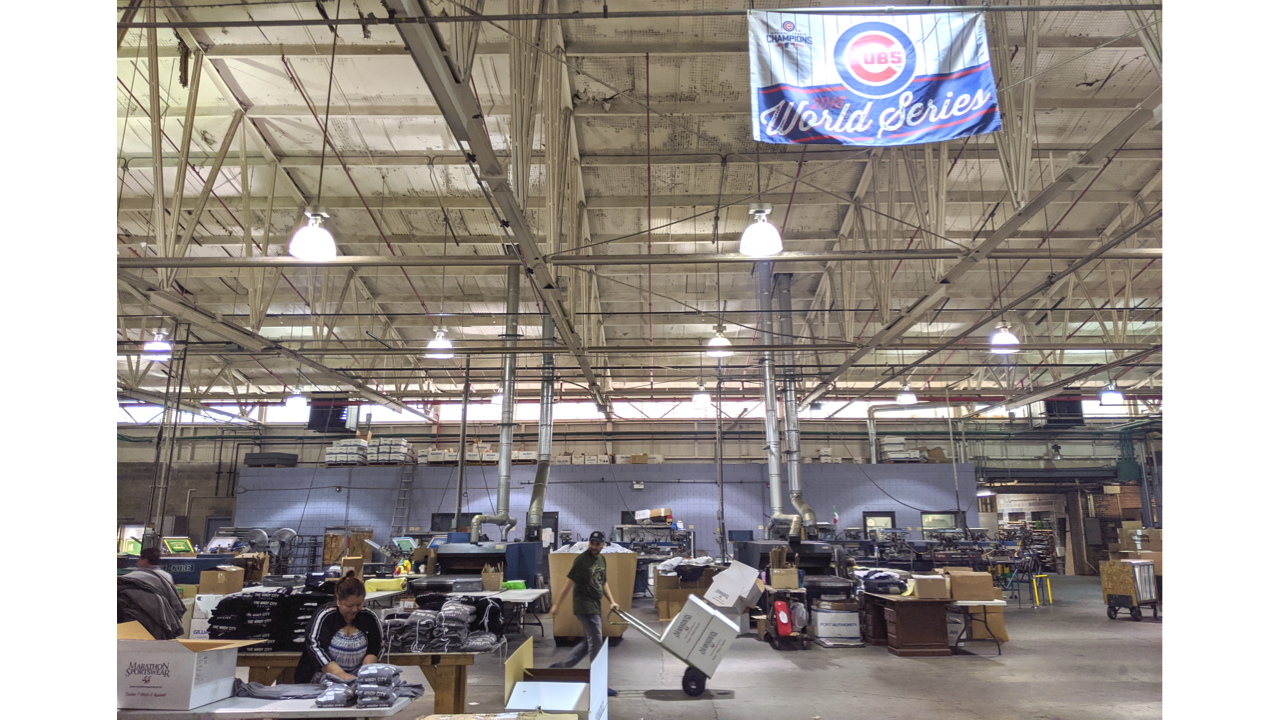
Do screen print shops make a lot of money? That depends on their business model, their customers, their prices, and their overhead.
Many print shops may not hit show-stopping revenue numbers. But a lot of screen printers turn a tidy profit on their work by carefully controlling their pricing and only taking on orders that they can print at a profit.
In the US, the amount of revenue screen print shops make follows a fairly normal distribution. This means the overwhelming majority of shops collect revenues between $100,000 to $1,000,000. There are hundreds of shops with revenues above $1M. However, there are very few screen print shops with revenues above $5M.
Note: the most common way screen print businesses fail is by setting their prices too low and failing to account for all of their fixed costs.
How to build a business plan
Begin with the end in mind: what is your ultimate goal? As you start your business, consider what your ultimate goal is. This is your dream, so consider the exact outcome you want 20, 30, or 40 years from now. Do you want to sell the business? Leave it to your kids? Grow it as large as you can? Work with certain clients and businesses? Become the best printer?
Thinking with the end in mind is a powerful way to focus your efforts. “This will make every decision you make along the way much easier,” says legendary screen printer and industry consultant Mark Coudray.
Note: for some ideas about what screen print shops can be, check out Printavo’s print shop tours.
What problem do you solve?
The best screen printing businesses solve a problem. That may sound ridiculous – how can printed items solve problems? But the truth is that it’s extremely challenging to order and procure t-shirts and other merchandise. Large companies have staff dedicated to purchasing and distributing “company swag” – it’s that challenging of a task!
The items you print are not what solve your customer’s problem.
The way you will solve problems for a customer (and, ultimately, add value) comes down to communication, execution, and professionalism.
Communication is how you talk to customers, when you send them messages, whether you use the phone or emails or texts, and what you say.
Execution is how you deliver what you promise on schedule.
And professionalism is the magic X factor – it’s how you make people feel once they’ve ordered from you.
Professionalism doesn’t mean you need to wear a suit and tie. It just means you’ve presented a top-notch custom experience for your customer from order intake to payment to delivery.
Who is your ideal customer?
If you define the core customers you want, all of your marketing and sales efforts become much simpler. To get a better grasp of who your customers are, write simple customer profiles:
- Who they are
- What their problem is
- Where they will purchase from you (in store, online, etc.)
- When they want to order (seasonal vs. recurring vs. one-time)
- Why they need custom printed merchandise
- How you solve their problem
You should NOT try to be everything to every single person! Once you’ve built several customer profiles, think hard about the potential and longevity of each type of customer.
For potential, consider whether this is a customer that will come back again and again – or whether they will only need a few small, one-off orders.
For longevity, consider whether this is a customer that can grow with you – or whether they’re a customer that won’t last long or doesn’t need your help.
Finally, consider what your brand is like. Your logo is great, sure…but how’s your brand?
The entrepreneurial nature of screen printing means that screen print shops come in all sizes and all types. Screen print shops have brands that range from punk-rock to manufacturing powerhouses, with the imagery, customers, and language to go along with their brand.
“Your brand is what people say about when you’re not in the room.” – Jeff Bezos
So what do you want your business to be? Branding is where you get to imagine something and make it into reality. Your brand can be clean-cut or rough around the edges – as long as it resonates with your customers and is true to what you do.
What’s the average cost of running a screen printing business?
It’s easy to start a screen printing business.
It’s harder to sustain it, keep employees happy, turn a profit, and still pay your bills. So how much does it cost to run a screen printing business? Again – it depends on a lot of factors, from where your shop is located to what type of garments you typically print on.
“Screen printing has a tremendous number of fixed costs,” explains Mirror Image’s Rick Roth.
The most common fixed costs for print shops are (in this order):
- People: labor
- Space: rent (or mortgage) payment
- Supplies: Garment and equipment payments
If you do custom printing, you’re probably well aware that every job is different. This also means that your revenue and profit can vary considerably even if your fixed costs are the same. This is why 50% of screen print shops fail within the first 5 years: it’s a challenge to maintain and manage a consistent quote pipeline of profitable custom orders!
Labor
Screen print shops employ people at different pay and skill rates. Here are several common positions and pay ranges.
Production managers are often the highest paid employees, as they bring a set of skills that provides a lot of value to the business. We have seen production managers paid salaries that range from $60k to $100k or more.
Press operators vary by location, but skilled press operators can command $15 to $20 an hour in many urban markets. Some shops designate one press operator as the lead operator. Many press operators juggle tasks such as shipping and receiving.
Salespeople command salaries and commission that depend on their skill and experience, but many shops give sales staff a moderate salary – and a percentage of their total sales. How you structure your sales commission depends on what you want to incentivize. We suggest using profitability instead of revenue – you don’t want your sales staff to sell jobs that don’t make your shop money.
Artists can command salaries from $35k to $65k, though many work part-time hours or are paid through an hourly or per-piece rate. Many shops utilize outside art services to lower their art cost, since there may not be 40 hours of work for an artist in a typical small-to-medium screen print shop. Note: many artists also work as screen technicians, press operators, or even in sales.
Screen technicians may perform multiple duties, such as coating, exposing, and reclaiming screens. They can command hourly rates from $12 to $20, depending on their experience and where they work.
While there are many other roles and positions in screen printing shops, these 5 roles are common throughout the industry in virtually all shops that do production printing.
Buying Garments
Depending on what kind of garments you print on, you may spend a lot of money procuring garments for your customers.
This is a big reason that you should always collect 100% downpayment – if you don’t, you’re floating the cost of the garments for your customers. If they’re paying you to print on expensive North Face jackets, you could be spending thousands of dollars before the customer has paid you a single penny!
So how do shops deal with the cost of ordering t-shirts for screen printing? They charge a markup.
If a t-shirt costs $3 to order from a distributor like SanMar, a shop may charge the customer $5. These $2 are the shop’s markup. That doesn’t mean the shop automatically makes $2 on every shirt it buys and sells.
So how much does it cost to purchase garments for screen printing? Again – the answer is really “it depends.” Screen print shops typically buy in bulk to get “case pricing,” meaning they order in multiples of 72 shirts. You can negotiate different wholesale rates through the major garment distributors.
Note: ordering garments is really easy in Printavo. We’re integrated with TSC Apparel, SanMar, AlphaBroder and S&S Activewear catalogs.
Buying Equipment
Most shops start by purchasing used equipment, though many shops jump straight into purchasing an automatic press once they tire of printing with their hands.
High-quality screen printing equipment for a serious print shop is expensive. After all, these tools can quite literally print money! The big ticket items are presses, dryers, screen printing software and consumables.
Automatic screen printing presses range from $20k for an affordable used model all the way up to $100k or more for top-of-the-line models from top manufacturers. Manual presses cost much less, but they also are much less capable of printing high volumes. An automatic screen printing press is widely considered the dividing line between “serious” and “hobby” shops within the industry – though we don’t want to put down shops that print by hand!
Curing dryers typically cost thousands of dollars (and consume gas or electricity to boot). Once shops need an automatic screen printing press, they typically need to upgrade their dryer shortly thereafter just to keep up with the press!
Software and consumables like ink and emulsion account for a large chunk of the cost to start a successful screen printing business, too. While consumables are just a cost of doing business, software for screen printing has a big return-on-investment by making your business organized and effective instead of disorganized and chaotic.
You’ll also have to spend money on tools (think squeegees, T-squares, and more) – but these are smaller, recurring purchases that you can think of like consumables. More advanced equipment like hybrid printers and computer-to-screen machines come later in your business growth.
Leasing vs. Buying Your Space
Ah, the classic dilemma: should you lease or buy your screen printing shop?
There’s no single right answer here – but we’ve talked to Real Thread’s Dru Dalton about his philosophy. He’s a renter, and he explains: “At a certain point, you have to decide whether you want to invest the money into real estate or into the business. I chose the business.”
This has been a tremendous asset for Real Thread during 2020 – they’ve been nimble enough to downsize and move because they’re not locked down to a mortgage on a big building. This has let them survive the challenging times their shop faced shortly after the pandemic began.
While we can’t tell you exactly how much you should spend on your space, a good rule of thumb for personal and business finance is to spend 30% (or less) of your total estimated revenue on your rent or mortgage.
The essential screen printing business tools
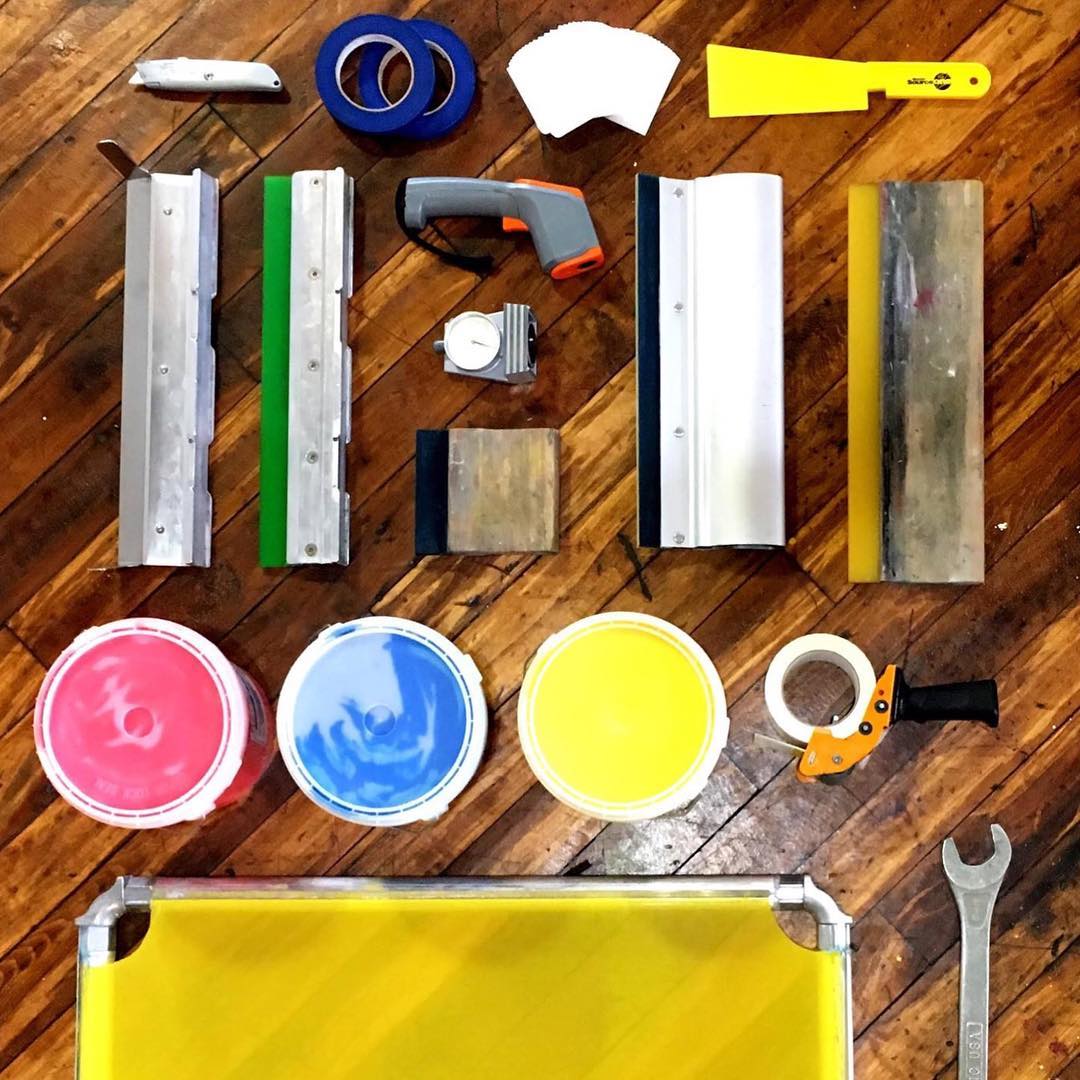
The tools you need for printing are not the same tools you need to run a successful business. You can always purchase a starter kit – or use one to get an idea of what you’ll need. It’s essential you have a way to send quotes and art for approval, get paid, and keep track of everything.
Starter kits vs. buying individual equipment
Screen printing starter kits seem like a great way to start a small business – and they can be!
But tread carefully. Remember: buy something nice, or buy something twice. Too many novice screen printers believe they can save a few bucks by buying a super-cheap screen printing kit off eBay.
These low-quality kits are infamous, and they often prey on people who don’t know enough about screen printing – but are interested in starting their own business.
If you really want to buy a screen printing kit, we suggest going with a company like Ryonet. Their kits are priced fairly, come with reputable brands, and are backed by Ryonet’s support staff. You can also use these screen printing kits to get an idea of what you’ll need to start printing.
You need software to succeed in screen printing
Even in this day and age, screen printers overlook the value that screen printing software can add to their business.
Printavo
Printavo has helped thousands of print shops in more than 40 countries get organized, grow their business, and run online stores. Never miss another deadline or get a question about when an order will be ready. The list of things Printavo can do continues to grow – everything from scheduling to approvals to payments to online stores – and it’s backed by an easily accessible team based in Chicago.
Sign up for a free trial to get a feel for how Printavo works. It’s the way to get organized, supercharge your shop, and craft an incredibly professional experience for your customers (even if you’re printing out of your garage).
QuickBooks
QuickBooks is the simplest way to start invoicing customers and keeping track of your payments. While QuickBooks is built for managing the finances of any small-to-medium sized business and isn’t specific to screen printing, many shops use QuickBooks simply because accountants are familiar with it.
Note: Printavo integrates directly to QuickBooks Online. We’ve found that most shops don’t have to change a thing about their accounting if they’ve used QuickBooks Online to manage their finances.
Google Suite
A truly indispensable set of tools, Google Suite (or GSuite) is more than just email from your domain. You’ll get Docs, Sheets, and dozens of other tools in Google’s powerful ecosystem. This is the simplest and most affordable way to give your team a set of tools that they’re probably already familiar with.
Note: looking for more info on screen printing software? We’ve got a list of more than 30 great tools to try. Read more here.
How to market a screen printing business?
Marketing your screen printing business doesn’t have to be a pain. It can be a natural part of your workflow: just take pictures of the prints you make and present them nicely. You could even post the artwork directly. Or film silly videos around your shop!
Content marketing
Content marketing is SUPER powerful. We’ve seen shops use content to drive customers to their online stores, create guides for customers to use when they’re placing custom orders, or even just show how to fold a t-shirt super fast.
People expect you to present some kind of content! One of our favorite suggestions is to avoid focusing too much on what you do in your shop – and instead focus on what your customers do with your products. “Tell the story behind the t-shirt,” Jon Ladd from Terminus Tees suggests. You could do a podcast, interview, or just take their picture and get a good quote.
The goal: make your brand real by guiding your customers to the right story.
Email: the most powerful tool you have
Email is the most powerful way to reach customers on the web!
Sounds kind of crazy, right? But it’s true. There’s no algorithm dictating whether your message gets delivered or not – and you can build a powerful list with very little work.
We suggest starting with MailChimp if you want to try email marketing. Make sure you’re collecting email addresses every time you interact with someone. Then start with a simple newsletter showcasing a cool print or something you’re doing around the shop. The goal: get in the habit of emailing your customers regularly so you stay top-of-mind.
Lead your town
The most popular print shops act like a leader in their town. They’re a bustling hub for retail, or they support really popular teams and organizations, or they’re simply present at all of the big events. “Be like the Mayor,” says Envision Tees’ Tom Rauen.
Try retargeted advertising
Ever searched for something…and then seen it all over the websites you visit afterward?
That’s called retargeted advertising, and it’s specifically designed to track customers that have visited your site all around the internet!
You stay top-of-mind when you appear on major websites – and it makes your brand way more legitimate. You can try AdRoll for retargeted advertising. Spend just a few dollars a day to start…you may see big results.
How to grow your screen printing business
So you’ve got all your ducks in a row and you’re all set.
But how do you grow your business?
This is where persistence really pays off. With some patience and the right mindset, you can keep doing the right things to get you closer to your goal.
Growing from $0-250k
Growing from $0 to $250k is where sheer hustle and determination – and some long hours – can really pay off. You’re probably handling just about everything in the business right now: marketing, sales, printing, order intake, shipping, approvals, design…it’s a lot for anyone.
The biggest piece of advice we can offer is simple: use software to help you.
Experimenting with different tools and types of software is crucial during this phase because you have so much you have to handle.
We were curious how software for screen printing helps a smaller print shop, so we asked Sound & Fury’s Mike Kodak. His response floored us: “Printavo is like getting an entire employee for a fraction of the price. I was so skeptical at first, but it’s true.”
Think about it: you can handle the printing while software handles order intake, quote and art approval, sends automated emails about job statuses, stores files, and makes sure you never forget another due date. It’s like getting a secretary, assistant, and automated call center all in one.
Growing from $250k to $1M
The things that got you to $250k are not the same things that will get you to $1M and beyond.
That’s because the superhero screen printer entrepreneur can only take things so far. What should you do next? Delegate and elevate.
At this phase in your business growth, it’s common to have a bunch of annoying, low-value, and repetitive tasks crop up. They kill your enthusiasm and make it seem like your to-do list is just endless.
Even if you can’t hire now, you have to find a way to get some of these tasks off your plate. Make a list of things you LOVE and things you DON’T LIKE. Find ways to get rid of as many “DON’T LIKE” items as possible – these are what will actually stop your business growth.
This is when standards, managers and departments become a big part of your vocabulary. Read our comprehensive guide for working on your business instead of in your business if you’re at this phase.
Common mistakes to avoid when starting a screen printing business
Since 50% of screen printing businesses fail within about 5 years, it’s worth noting the most common and expensive mistakes that print shops make.
We’ve seen these 4 major problems crop up in shops. These are the major profit-killing areas that you can avoid if you’re proactive from the beginning.
Poor processes
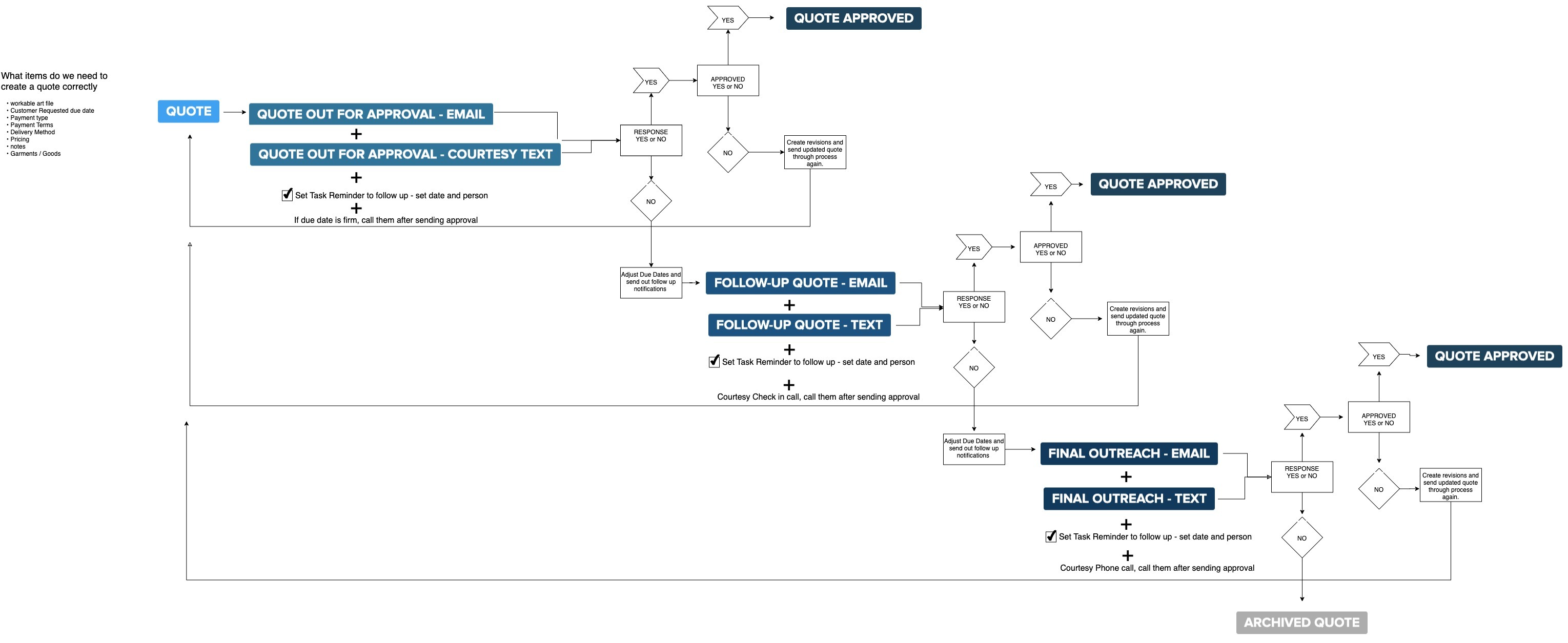
Do you understand what exactly happens when your customer places an order – from beginning to end?
Sit down with a pen and paper and try to draw it out. The odds are good that it’s a lot more complicated than you think.
How do you track and manage so many complex statuses for so many orders?
Having a clear process – from day 1, if possible – is key. It’s best if it’s written or illustrated in an area that any employee can access it. Software like Printavo can help you track your statuses and (better yet) keep everyone on the same page.
Mismanaged job scheduling
Even the tightest shops have about 3 days of wiggle room in their schedule. This gives you room to move jobs around and hit surprise rush dates. Or, candidly, give you some spare time if you make a mistake.
The best way to schedule jobs? Put things that require similar techniques and inks together. Got a bunch of hoodies coming up? Try to schedule them all on a couple days instead of spacing them out.
Not meeting due dates
So you’ve hustled super hard and landed a big order for a marathon.
But for some reason, your wholesaler doesn’t pull through on time. You don’t manage to print the shirts in time for the race.
The race organizers are pissed and they want a full refund. You wind up eating the cost of shipping each shirt to the race participants and lose thousands of dollars.
In a couple months, you can’t make bills and your business goes under.
This has happened. Without rock-solid due dates, you can’t expect to please your customers…particularly if you’re delivering the swag for a big event.
Always leave room in your shop to hit due dates. We suggest setting your print dates well before the day the customer actually wants the product – it’s crucial to your business’ survival!
Pricing set too low
Pricing is tough and everyone knows it.
Set your prices too high and you can’t get sales.
Set your prices too low and you go out of business.
But it’s not impossible!
You have a lot of fixed costs in screen printing. The more you can print, the more profitable you can be (ideally). So don’t fall in the trap of offering nonsensical price breaks.
We’ve explained how to do breakless pricing for screen printing – where your costs are calculated per each individual shirt ordered instead of broken down into tiers – and you can easily upload your shop’s unique prices to Printavo with our pricing matrices.
But here’s our #1 piece of advice to EVERY screen printer: raise your prices.
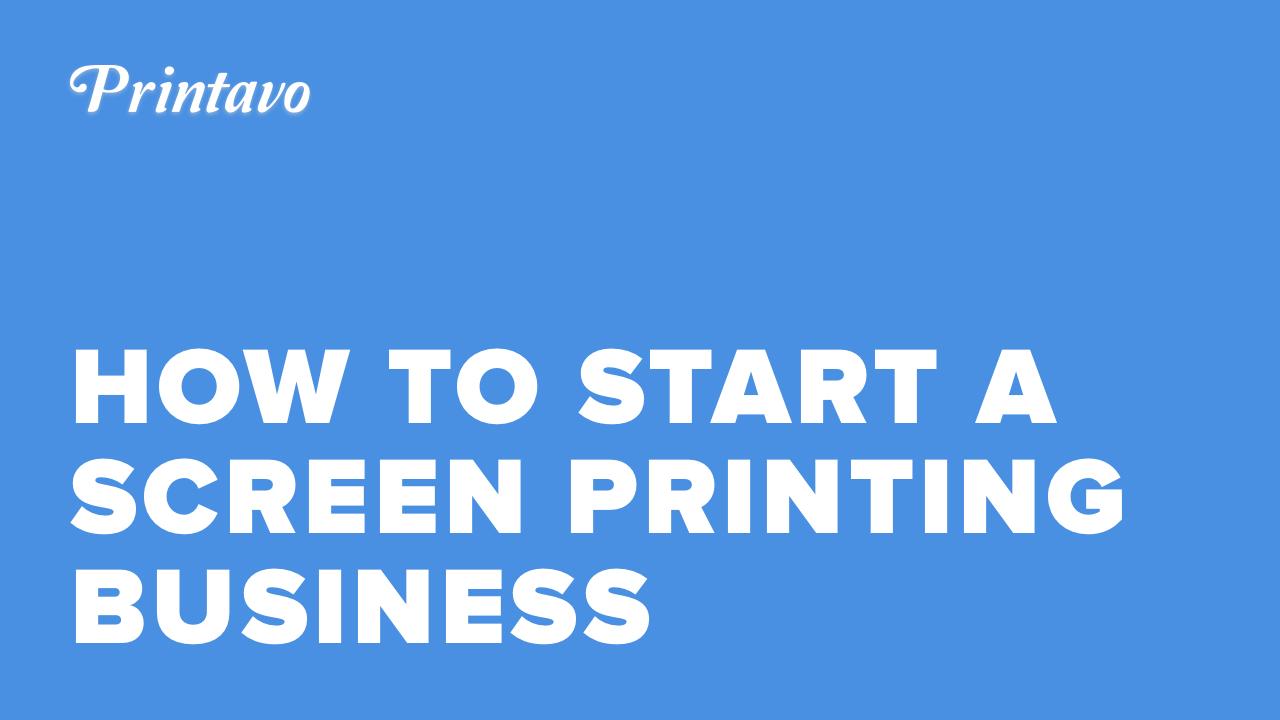
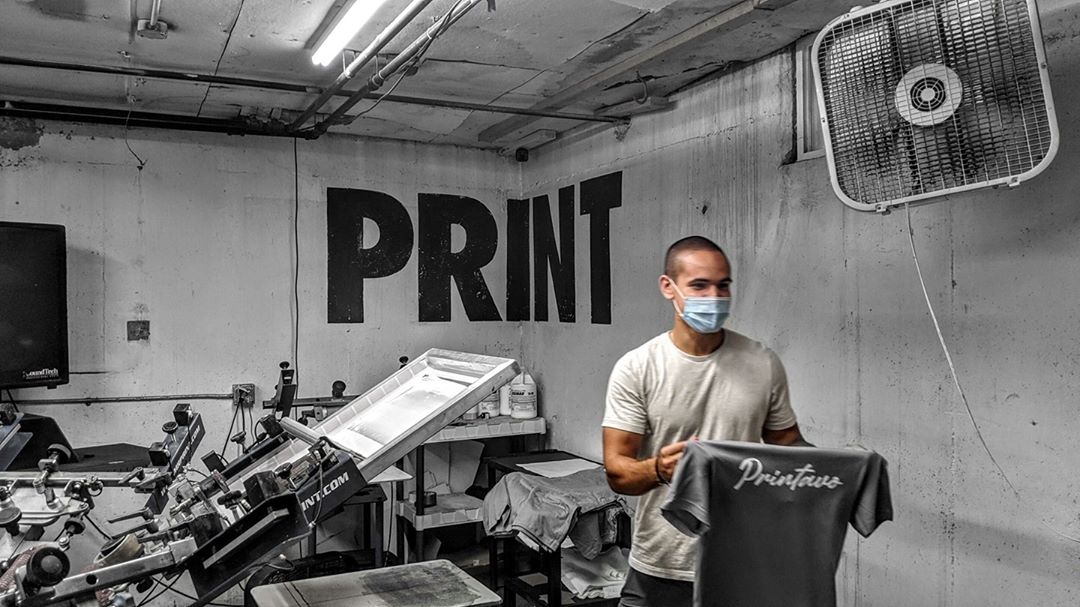


0 Comments